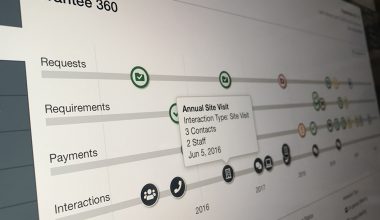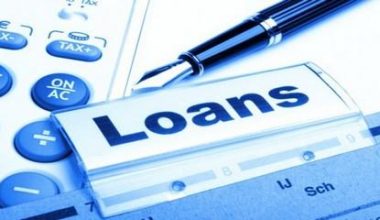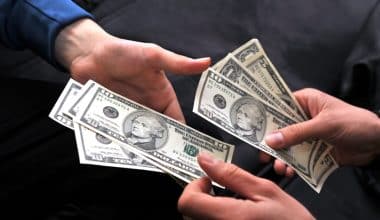It is not enough to earn a considerable amount of income, you must learn to manage your finances to attain financial freedom. What you receive as your net pay after tax deductions is your disposable income. Subtracting necessary expenses from your disposable funds will leave you with your discretionary funds. This is the exact amount you can save, invest, or simply spend on anything you want. From buying a new pair of jeans to treating yourself to an expensive meal or on vacation. In a way, discretionary income influences the economy because businesses come up with marketing strategies targeted at prospective buyers, and producers of luxury goods gets to sell their products too.
Discretionary Income
Discretionary income refers to what’s left of your net pay after subtracting relevant expenses like mortgage, and so on. Disposable income is one of the economic indicators used to evaluate the state of the economy. Every single penny someone spends on their wants rather than their needs after. After taxes and the cost of basic essentials like food, shelter, and clothing have been covered, a person’s discretionary income is the portion of their income that is still available for spending, investing, or saving. It also extends to spending on luxury items, vacations, and non-essential goods and services.
Businesses that offer discretionary products typically suffer the most during economic downturns and recessions since discretionary funds are the first to decline amid a job loss or pay reduction. It is a crucial component of a strong economy. When they have the money, people only spend it on items like vacations, movies, and consumer electronics. Some people use credit cards to pay for luxury items, but having more personal debt does not equate to having more spending money.
How to Calculate Discretionary Income?
A portion of all the money left over after taxes, or disposable income, is discretionary income. Subtract all responsibilities and expenses from your disposable income. The net pay you receive after paying your income tax is your disposable income. To calculate discretionary funds, you’ll have to subtract necessary expenses from disposable income. Necessary expenses include mortgage or rent, utilities, loans, auto payments, meals, etc. Once you’ve paid for all of those items, whatever is left to save, spend, or invest is your discretionary funds.
Costs of the individual and the family
Calculating the cost of your necessities from your disposable income will give you an idea of your discretional amount. This example shows how to calculate it annually:
#1. Identify your total annual income
This usually includes both their yearly salary and any earnings from any part-time jobs. If your job earned that much, for instance, your annual salary would be $50,000.
#2. Subtract for taxes
You’ll owe a specific amount based on your state, filing status, and deductions. For the purposes of this example, assume that your annual payroll taxes total $10,000.
#3. Subtract for necessary expenses
This would include payments for your rent or mortgage, utilities, groceries, insurance premiums, and other necessities. Let’s say they bring in $20,000 annually.
#4. Your discretionary money is all that is left over.
In this case, your monthly discretionary funds would be $20,000. The leftover money would be used on extras like entertainment, dining out, retirement savings, and debt repayment.
Discretionary Income Examples
You have discretionary income remaining after paying your taxes and other living expenses. Your wage, social security benefits, or any other source of income may provide you with discretionary funds. You can use it for wants like movies, get tickets to a show or go on a trip.
Discretionary Income Marketing
How does discretionary income relate to marketing? Most consumer-focused businesses make money off of consumers’ discretionary spending, and many of them depend on it. Promoting leisure, pleasures, and other non-essential goods and services are blatant examples of industries that depend on discretionary spending. However, purchasing many household products, such as laptops, radio equipment, and kitchen appliances, is driven by discretionary funds.
In terms of discretionary funds, there are specific rules for your budget. This is because you can still go on vacation or buy luxury items with your discretionary fund. However, many marketers are drawn to reaching out to groups of people who are able to purchase their products. They use the demographics of those with discretionary income to target their marketing. For example, a manufacturer of kitchen appliances might not think it is advantageous to market to consumers under the age of 25, given that they frequently have little spare income and are unlikely to already own anything. Instead, the manufacturer’s marketing team would be more tempted to target retirees and homeowners without children.
Discretionary Income Definition Economics
Discretionary income is primarily what drives a market-based economy. Increasing discretionary funds is crucial to the performance of every economy. This is because an increase in spending and production determines the state of the overall economy.
For discretionary money, three distribution options are available:
#1. Spending
When people and households spend more of their discretionary funds on items like vacations, luxury goods, and other non-essentials, businesses that provide those goods and services profit.
Businesses can then reinvest the profits to increase their operations, resulting in greater employment and a further increase in disposable funds. Profits can also be distributed by businesses to shareholders, increasing the available cash for the owners.
#2. Investing
When individuals and families allocate a larger percentage of their disposable income to various types of investments, businesses also receive money. The funds can be used to expand the businesses. This in turn, leads to the creation of new jobs and an increase in disposable income.
The goal of the investments is to increase the investor’s future discretionary funds through a return.
#3. Saving
People and households frequently use banks or other financial institutions to save more of their surplus money. One of the main components of banks’ business strategies is to lend out a portion of the money they receive from depositors and savers while keeping the remainder safe for them. The money is often used for initiatives that boost the economy by the borrowers, who can be either individuals or businesses.
Discretionary income Economic Consequences
The economy will benefit more from spending than from saving, and through monetary policy, central banks can affect consumer spending or consumption. Spending more and saving less will be encouraged by low-interest rates and an expansionary monetary policy among individuals and households.
On the other hand, a tighter monetary policy with higher interest rates will motivate individuals and households to increase their savings and lower their consumption.
Disposable and Discretionary Income Definition
Discretionary and disposable income are important economic indicators that are used to evaluate the financial sustainability of organizations and people.
What is Disposable Income?
Disposable income is one of the economic indicators used to evaluate the state of the economy. After income taxes, the amount of net income that a household or individual has available for investing, saving, or spending depends. Your disposable income is the sum you actually take home each pay period. Discretionary funds is the sum of all obligations less all other revenue.
What is a Discretionary Income?
The money that a family or individual has left over after covering taxes and necessary expenditures like rent or mortgage, utilities, school loans, and credit card debt is known as discretionary income. Due to the fact that discretionary income is a division of disposable income, there are certain parallels between the two revenue streams.
There is, however, one key difference: disposable income disregards necessities. It simply displays the amount of money you have after taxes to spend on both necessities and enjoyment.
How to Increase Discretionary Income and Spending Power
The simplest way to increase your disposable and discretionary income is to earn more money. Getting a raise, finding a job that pays more, or taking on extra work can be useful, but these options aren’t always available. If your income stays the same, you may be able to find ways to lower your tax burden, but you may need the help of an accountant.
You might also attempt to cut back on your spending. buying generic or store brand products instead of name brands, for example. It will add up over time to use less energy by leaving the windows open rather than turning on the air conditioning, lowering the temperature on your thermostat, or turning down the hot water heater. Finding methods to cut expenses is one of the simplest ways to increase the amount of money you have available.
Finally, try to pay off your bills as soon as you can, paying close attention to the loans with the highest interest rates. For instance, using credit cards may cause your monthly cash reserves to be depleted quickly. Paying off high levels of debt could potentially cause a short-term loss in your discretionary funds, but it will eventually rise.
What is the meaning of a discretionary income?
The part of a person’s income that remains after taxes and covers luxuries like clothing, food, and housing is known as discretionary income.
What is an example of discretionary income?
Your discretionary income is the amount of money you have left over after paying all of your bills, including rent or mortgage, utilities, food, and credit card payments.
What is the difference between discretionary income and disposable income?
Disposable income is the sum of money you have left over after paying all of your federal, state, and municipal taxes. Your discretionary income, on the other hand, is the money you have after meeting all of your basic living expenses and paying your taxes.
What is another word for discretionary income?
Despite the fact that the terms disposable income and discretionary income are sometimes used interchangeably, they actually relate to different types of revenue.
What is a good discretionary income?
A person’s discretionary income is the amount of their income that is left over after paying taxes and covering the costs of basic necessities like food, shelter, and clothing.
How does the government determine discretionary income?
Your discretionary income, as it relates to the Income-Based Repayment Plan, the Pay As You Earn Repayment Plan, and loan rehabilitation, is the sum of your annual income and 150 percent of the federal poverty level for your family size and state of residence.
Conclusion
The purchasing power of very individual depends on their discretionary income. You can only spend on wants after meeting your relevant needs. Having enough discretionary fund, also boast the overall economic environment.
Discretionary Income FAQs
What are discretionary items?
Vacation, travel, and whatever money you spend on wants are discretionary items.
What is the formula for discretionary income?
The formula for discretionary income is subtracted to 150 percent of the poverty threshold for your family size and state of residence from your annual income.
- Discretionary Investment Management: Overview, Advantages, and Risk
- Discretionary Fiscal Policy: 2023 Definitive Guide(+Detailed Examples)
- FLEXIBLE EXPENSES: Definition, Examples & Comparisons
- Creating Family Budget: Easy Template






